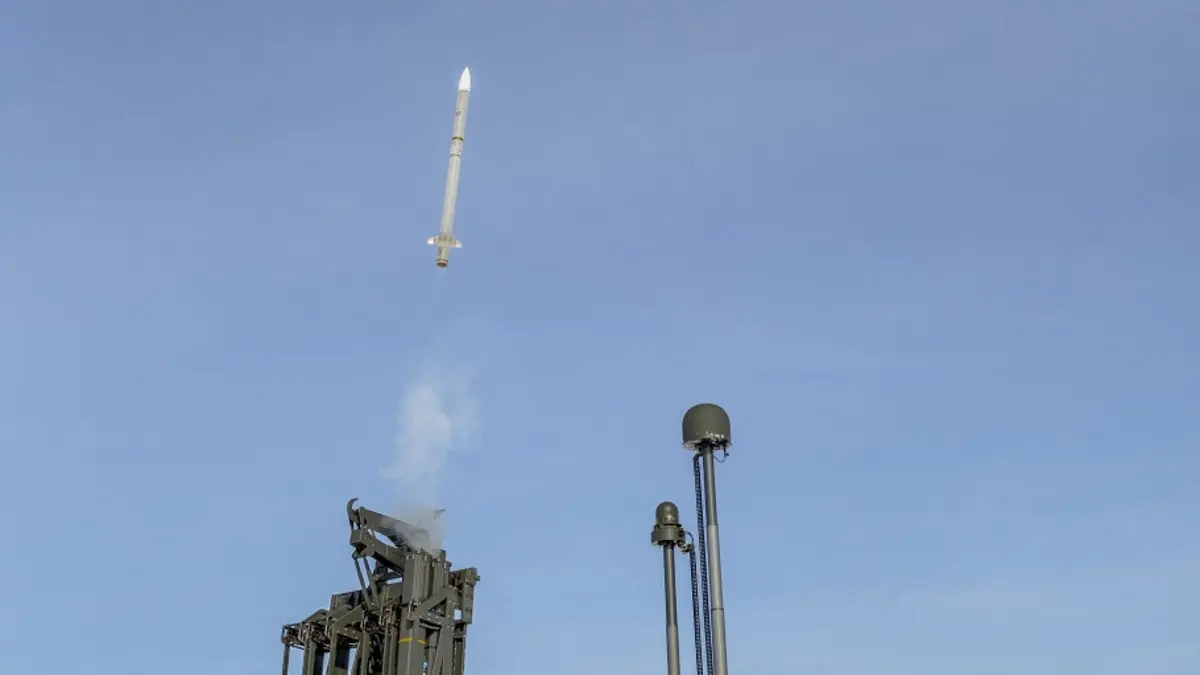“(London – August 22, 2025)
The United Kingdom is strengthening its air defence network with a £118 million investment in six additional Land Scepter missile systems, which will expand the British Army’s Sky Sabre capability and give it a stronger edge against the growing threat from hostile missiles, drones and aircraft. The Ministry of Defence announced the purchase this week, presenting it as both a response to the evolving security environment in Europe and a commitment to sustaining a domestic industrial base capable of producing world-class missile systems.
Sky Sabre system expansion
Sky Sabre, which entered service a few years ago, has quickly become the backbone of the UK’s ground-based air defence. It integrates Saab’s Giraffe radar, a digital command-and-control system and MBDA’s Common Anti-Air Modular Missile (CAMM) to provide a highly mobile and Digitally connected shields can be created. Land ceptor launchers form the firing element of the system, providing a versatile platform that can engage multiple targets simultaneously. Complex air environment.
The new order will see MBDA UK manufacture and deliver the launchers, securing skilled jobs and ensuring Britain maintains a strong foothold in the defence-industrial competition to provide modern air defence systems. Recent live firings at the Hebrides range have highlighted the system’s accuracy and ability to engage small, fast, low-flying threats, confirming its readiness to meet the demands of a rapidly changing battlefield.
- (MBDA/UK MoD)
Responding to a changing threat
This investment is timely. Russia’s relentless missile and drone attacks have led to large-scale, The destructive potential of low-cost air strikes has shown itself to be a major challenge for European governments, forcing them to rethink their air defence strategies. The need is no longer limited to defending against high-altitude aircraft or ballistic missiles, but now includes cheap, offensive drones designed to suppress conventional systems. The British Army’s Land Sabre batteries provide a middle ground between point defence and high-altitude protection, capable of intercepting both conventional and unconventional threats with speed and precision.
By adding six more systems, the UK is not only increasing the density of its coverage but also ensuring greater flexibility to protect critical infrastructure, military bases and urban areas. Sky Sabre’s mobility means the batteries can be quickly repositioned, allowing commanders to respond to changing threats without being tied to static defences. The system’s networked command and control is linked to NATO assets. It also allows for integration, the alliance’s broad air and strengthens the missile defence posture.
Impacts at home and abroad
Locally, additional land interceptor units provide more breathing space for the armed forces, reducing the strain on existing batteries and allowing for training, rotation and maintenance without compromising coverage. In the long term, Sky Sabre’s open-architecture design ensures that the system can be upgraded to accommodate future missiles such as the extended-range CAMM-ER, as well as new sensors or non-dynamic immunities. drones.
Regionally, the acquisition improves the UK’s role in NATO’s integrated air defence network. European allies are also purchasing CAMM-based systems such as Poland’s NAREW programme, so a shared missile family creates a level of interoperability that will prove essential in an emergency. Shared stockpiles, training collaboration and collaborative exercises reduce friction and increase the resilience of the alliance.
Globally At a global level, this investment reflects a broader trend: nations are moving rapidly to achieve scalable, mobile and affordable defence that can keep pace with the proliferation of drones and precision-guided munitions. For MBDA, this contract adds to a growing portfolio of orders across Europe and beyond, demonstrating that industrial capacity and speed of delivery are now as strategically important as technology.
- Sabre Defence System with iLauncher and Giraffe radar in the background of the British Army Sky. (UK MoD)
Looking ahead
The new Land Scupper systems represent a practical and immediate upgrade, but they also lay the foundation for future developments. As the UK continues to invest in its integrated air and missile defence, technology will continue to evolve, providing a level playing field for defence. More emphasis will be placed on connecting aircraft, ships and ground-based systems into a single network so they can counter threats across the spectrum.
“At a time when the skies over Ukraine are a daily reminder of how vital air defence has become, the UK’s decision is both a message of deterrence and a sign of preparedness. It ensures that Britain remains at the forefront of European air defence, while strengthening the collective shield on which NATO relies. Today’s purchase may be measured in millions of pounds, but its impact will be felt for years to come – at home, across the continent and in the global defence community.”
Read More: Sailors Battle Blaze Aboard USS New Orleans off Japan’s Coast
FAQs
The UK is increasing its Sky Sabre network in response to the growing threat from drones and missiles, particularly after seeing how Russia is using low-cost air strikes in Ukraine. These new systems give the British military stronger protection and a faster response to modern air strikes.
Yes, the Sky Sabre is designed to handle both. It can track and destroy fast, low-flying drones as well as larger targets such as aircraft or missiles. This makes it very useful at a time when drones are becoming a key weapon in conflicts around the world.
The UK’s new Land Sabres connect directly to NATO’s defence network. Countries like Poland also use CAMM-based systems, which means better teamwork, shared training, and a common missile stockpile across Europe. It makes the alliance stronger and more connected.
The system is designed to evolve with new technology. In the future, it can fire long-range CAMM-ER missiles, use stronger radar, and integrate with ships, jets, and other defenses. This means it will remain effective even as new threats emerge.








Leave a Reply